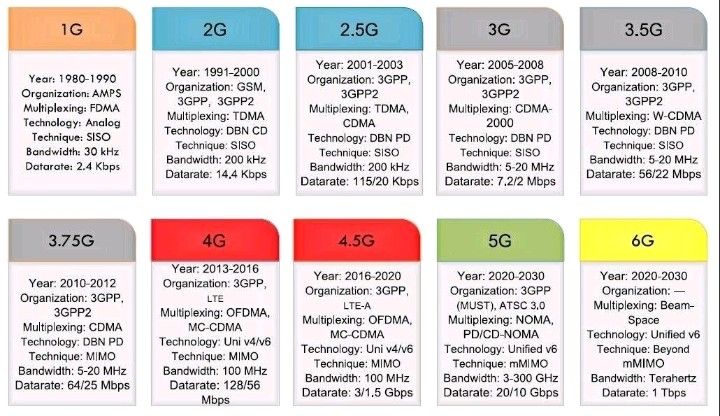While using the internet or buying an internet pack, you might have heard about the terms 2G, 3G, 4G, or 5G. So, when these terms appear, what do they refer to? And if you have opted for a 5G connection, what does 5G stand for in 5G technology? What is 5G technology, and how is it different from previous generations?
In this article, we will go through these concepts and understand 5G in better way. This will help you to understand what kind of services or download/upload speed you will get if you opt for 5G over previous generations.
First, let’s start with the internet connection types you get from the ISP (Internet Service Provider) like 2G, 3G, 4G, and 5G. These terms represent generations of mobile network technology for wireless communications. Like If we talk about 2G, it means the second-generation network; 3G means the third-generation network; 4G means the fourth generation, and similarly, 5G refers to the fifth-generation mobile network.
Each generation offering significant improvements over the last. 2G networks primarily focused on voice calls and SMS messaging, 3G introduced basic internet capabilities, while 4G significantly improved mobile internet speeds. Same 5G goes beyond just speed; it boasts greater network capacity, allowing for the connection of more devices simultaneously and offers better speed than the previous generations of cellular networks, which are 4G, 3G, and 2G.

When we say we are using 5G, it means we are talking about the 5th generation mobile network, which clearly indicates that we are using a faster internet connection. Our data speed is fast, and latency (the delay in data transmission) is very low, allowing us to easily connect more devices. By turning on the Wi-Fi hotspot, we can even provide the cellular network for internet access to others, and this way the others can also use our internet at full speed. This is the beauty of 5G technology, which was not possible in previous generations like 2G and 3G.
Due to 5G, we are now able to communicate with others in a much faster way. 5G has made video calling with multiple devices very easy, and it is because of 5G that we are now able to take online classes at full speed without any delay or glitch. 5G has provided numerous benefits, and nearly every country in the world is using the 5G network, although some countries are still using the older generations of 2G, 3G, or 4G networks. However, in developed countries like the UK, USA, Australia, New Zealand, and India, 5G is being widely adopted and is solving many problems.
With 5G, we can now pay money on time, release funds by scanning a code in a very quick time, do bank transactions easily, learn and take classes online, and chat with multiple people at once. All of this is possible because of 5G technology.
Similarly, when the next phase of 6G arrives, it will offer even better speed and provide more benefits than 5G. According to experts, 6G is expected to have a peak data rate of up to 1 Tbps (terabits per second), which is significantly higher than the peak data rate of 20 Gbps (gigabits per second) in 5G. Additionally, 6G is anticipated to have lower latency, improved energy efficiency, and better support for emerging technologies like virtual reality, augmented reality, and the Internet of Things (IoT).
Still have any doubt regarding the 5G technology? Please let us know in the comments and don’t forget to share!

